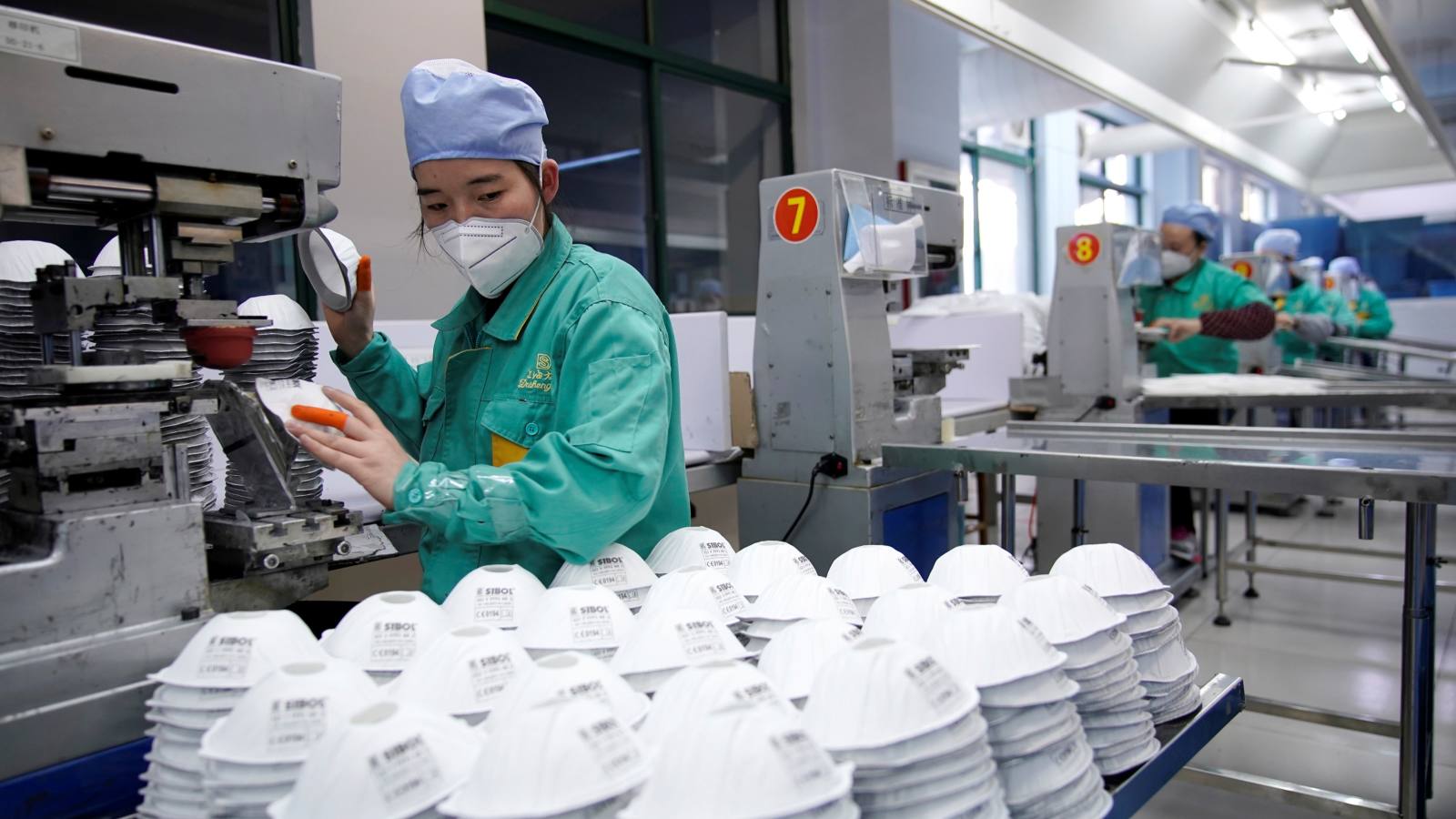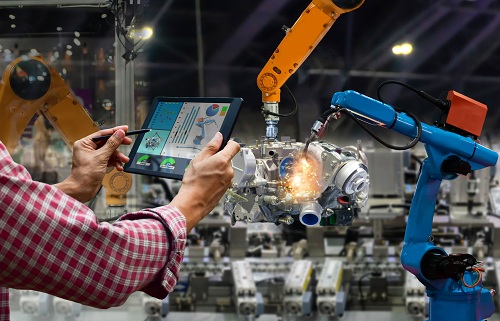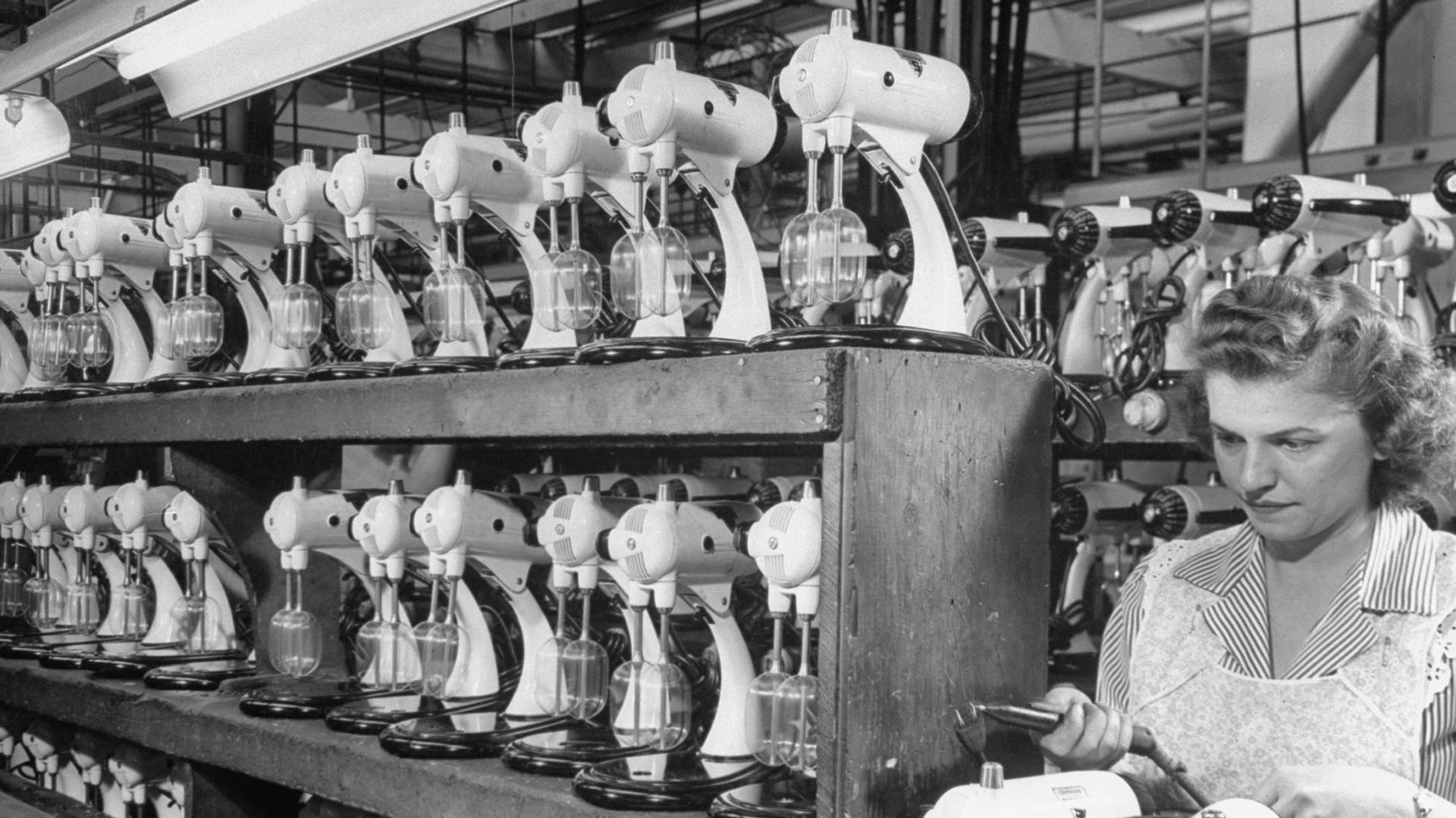Lessons from History to Manage the Challenging Years Ahead
 When everybody else thinks it’s the end, we have to begin.
When everybody else thinks it’s the end, we have to begin.
Konrad Adenauer, chancellor of West Germany, 1949 - 1963
“当每个人都认为都要结束时,这正是我们开始的时候。”——康拉德•阿登瑙尔(Konrad Adenauer),前西德总理,1949-1963年
We are not at the end of the COVID-19 crisis, and maybe not even at the end of the beginning. But it is not too soon to build the strategies that will foster broad-based growth.
As the world considers how to navigate the post-COVID-19 future, the only certainty is that it will be different, or that the future is not what it used to be. But then, the future is always different, and always uncertain. The past is less so. Considering the lessons of history can help business leaders and policy makers figure out how to manage the challenging years ahead.
With that in mind, we looked specifically at the post–World War II era—a time when much of the world rose, quite literally, from the ashes. Not everywhere, of course, or to the same degree. Indeed, many countries would not want to revisit the decades after the war. Eastern Europe went behind the iron curtain; China suffered civil war, starvation, and the Cultural Revolution; much of Africa, Latin America, and the Middle East was unstable and wracked by conflict (although there were bright spots in these regions, too). So the following discussion draws chiefly on the experience of Japan, the United States, and Western Europe, which were conspicuous in their success. Technologies developed for war were adapted for peace-time use. Poverty, government debt, and inequality fell, while living standards improved and prosperity spread broadly.
新冠疫情还没有结束。它剧烈地改变了整个世界的状况,而凡是过去,则皆为序章。世界各国正在商讨如何继续进行未来的发展,以及制定各种各样的计划。以史为鉴,想必是非常具有帮助的。这篇文章考虑到这一点,专门研究了第二次世界大战后的时代。在那个时候,世界上大部分地区都从灰烬中崛起的。然而,世界各国却获得了非常良好的发展,解决了种种当时看似非常困难的问题。这是一次全球性的灾难,而本文先分析了历史上的灾难,以及阐述了当时的政府的处理方式。然后,提出了一些解决当前问题的方法,例如根据全球化制定新的贸易政策,改革和重塑全球化,促进技术传播与发展,提高生产力,等等。要想出正确的发展方式和政策,就需要领导者们具有丰富的能力,才能。在新型冠状病毒危机期间,民间都为这个社会贡献了非常多,甚至可以说,人民抗击疫情的力量比政府要强大,也更加有效。为了创造广泛繁荣的未来,我们需要深思熟虑。
Here, we address two questions.
 What accounted for this record of inclusive growth, sustained for more than two decades?
What accounted for this record of inclusive growth, sustained for more than two decades?
While acknowledging that the world has changed enormously since 1945, are there ideas and actions taken then that can inspire us now?
The coronavirus pandemic is not nearly on the scale of the tragedy of World War II, in which an estimated 60 million people died and many cities were levelled. But COVID-19 has killed more than 600,000 people so far and shut down huge swathes of the global economy, with all the suffering that implies. By any standard, that constitutes a global catastrophe. So it may be useful to think about how Western Europe, Japan, and the United States recovered from a previous catastrophe. We think the following factors were particularly relevant.
The United States played an important role. Even several years after the war, tens of millions of people remained hungry and cold in Japan and Europe, and the United States recognized that, for both humanitarian and geopolitical reasons, it needed to help. The most famous effort to meet these pressing needs was the Marshall Plan. From 1948 to 1952, the United States gave $13 billion in aid to 16 European countries (equivalent to $126 billion today) to get European economies back on their feet.
By 1952, when funding ended, each participating country’s economy had surpassed pre-war levels. Japan also received considerable aid and other support that fostered the structural adjustments it needed to transition from a war-focused to a peacetime economy. All told, US economic aid totalled $44 billion by 1954—the equivalent of $420 billion today.
After World War II, there was a broad sense that it was time to do better for the millions of people who had suffered so terribly and whose leaders had previously failed them so badly.
Governments took a long-term view, with effective planning teams that implemented multiyear initiatives in areas such as education, energy, infrastructure, R&D, telecom, and transportation. These were sustained through changes in political leadership and included the expertise of scientists and economists.
There was no post-war miracle; the actions that forged recovery were all human made. Good policies, political commitment, and hard work made it happen. The same will have to be the case in recovering from the coronavirus crisis. Not the same policies, of course—the conditions are too different.
Adapting the lessons
To win the post-COVID-19 peace, today’s policy makers and business leaders need to channel the optimism and imagination of their post-war equivalents—but differently. In many ways, we live in the world created then. While keeping what is worthwhile, it is time to do better. Here we suggest ten ways to win the peace.
 Reform and reshape globalization
Reform and reshape globalization
Global problems need global attention, something the architects of the post-war world recognized. Today, we need to do the same, reshaping globalization and its institutions to meet modern needs. The good news is that doing so may be a matter of pushing on an open door.
Here are some ways to address some of the discontents associated with globalization.
Create new trade policies according to globalization
One change is that trade in services is now growing much faster than trade in goods—60 percent faster overall, and two to three times as fast in specific sectors, such as information technology. Depending on how the figures are calculated, trade in services may already be more valuable than that in goods.
Global institutions need to be modernized so that these (and other technologies and trends) can become the basis for inclusive growth. International agreements that enable a balanced and safe flow of data and services, including standards for taxes on digital products and services, intellectual-property protection, data privacy, and security, all need to be developed.
Promote the diffusion of technology
It has been identified that there are a dozen technologies that could create $33 trillion a year in value by 2025. For technology to continue to advance and thrive, there must be a global framework within which companies can operate; without it, regulation will be fragmented, which raises costs and causes irritation to no good effect.
Again, the COVID-19 era is showing up the possibilities, with new and nimble partnerships producing equipment and working together to find and develop a vaccine.
Modernize social policies
Many countries offer more insecure employment, higher housing costs, and greater economic polarization. Yet social policies related to work, unemployment, and income support have not changed nearly as much as the circumstances around them. That said, some initiatives are worth evaluating to see how well they work (or not). The role of government is to identify the best ideas, test them, and then expand (or discard) them.
Institute measures to increase productivity
There can be no inclusive growth without economic growth, which means productivity has to grow, too. Those who are displaced by technological change will end up in lower-paid or casual work—the opposite of inclusive growth.
Build digital infrastructure
Beyond the implications for industry, connectivity also has ramifications for equity and society—something that has been proved emphatically true during the pandemic, during which the use of online education and telemedicine has skyrocketed.
Invest in reskilling
One out of 11 jobs in 2030 could be in occupations that didn’t exist in 2015. There will be more jobs that require tertiary education and fewer available to those with only a high-school education or less.
AI adoption alone could raise global GDP $13 trillion by 2030—but only if the right talent is available. The change could be wrenching. By 2030, as many as 375 million workers—or roughly 14% of the global workforce—may need to switch occupational categories as digitization, automation, and advances in AI disrupt the world of work.
The case for change is clear. But educational models have not changed much over the past century, and in the countries that are part of the Organisation for Economic Co-operation and Development (OECD), government spending on training has actually fallen.
The public sector will need to devise new unemployment income and worker-transition support programs and work more closely with the private sector and organized labour to develop effective ways to build capabilities.
Another area to look at is extending educational support into adulthood through the creation of lifelong learning programs, such as the individual training accounts established in France and Singapore.
 Expand the labour force
Expand the labour force
In the post-war era, population growth was an important factor in the period’s economic and productivity success. In today’s context, many countries absolute population is declining. In this context, how could the labour force be expanded? One way is through better health.
The value of improved health to the happiness of individuals is, of course, incalculable. In strictly economic terms, a healthier late middle age would allow more people to work longer and more productively. We understand that this would require changes to retirement laws and pension systems, and increasing labour-force participation in this way could bring big dividends.
Embrace ‘stakeholder capitalism’
The term encompasses the idea that companies consider the interests of their employees, customers, suppliers, and communities, as well as shareholders, in their decision making. In a general sense, few CEOs would disagree (and even fewer publicly). But the good intentions embodied in this phrase must be accompanied by action.
Invest in employees
There are economic benefits: it can be much more profitable to reskill a valued employee than to find a new one. A company’s existing pool of workers can be a source of new talent.
Reskilling can be expensive, particularly for smaller companies; and it’s true that sometimes employees take their new skills elsewhere. One approach is to work with other institutions—community colleges, government agencies, even companies in the same sector—to spread the costs. But while reskilling carries cost, as does having a less adept and discouraged workforce.
Deploy productivity-boosting technology
During the COVID-19 crisis, companies have used technology in new ways to cope, often with a speed and success that surprised them.
On the whole, however, there are big gaps between what is being done and what could be done. In 2017, industries were less than 40% digitized. In 2019, China, Europe, and the United States had tapped into only 20% of their digital potential. That matters, because just as technological diffusion powered post-war growth, digital capabilities will likely be a major factor in fuelling post-COVID-19 growth.
An analysis of the effect of digital on productivity is compelling—70% of those identified as “digital superstars” achieve higher-than-average productivity, and the most digitized sectors are also the ones that are the most productive. Even so, only a quarter of global sales and supply-chain operations were digitized in 2019, less than a third of operations volume was digitally automated, and in 2018, only 12% of companies had invested in AI in domains where the business case to do so was strong.
History can still provide useful lessons
The 1950s and 1960s look pretty good, as many economies enjoyed sustained and inclusive growth. COVID-19-riddled 2020 is not war-wracked 1950. But history can still provide useful lessons: One is the need for international institutions and the public and private sectors to pull in the same direction; another is the importance of health, education, and training.
There are also lessons in what not to do. Countries that cut themselves off from the global flow of technology, trade, and information generally underperform. Controls on capital, wages, and prices suppress growth. Nationalizing industry is a productivity dud (with rare exceptions). Even with the right goals and the best of intentions, making the wrong choices can hurt productivity—as happened in post-war Britain—and thus make it less likely that the desired outcomes occur.
Imagination, leadership, and a dash of inspiration will be required to figure out the right policies for the 21st century. During the COVID-19 crisis, there have been many examples from the public, private, and social sectors to prove that these qualities are alive and well. What is needed now is the commitment to make the changes and investments that will create a future of broad prosperity.